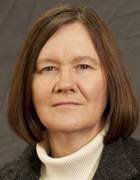Cancer clinic juggles two-tiered storage environments
Karmanos Cancer Institute is using two separate tiered storage systems from EMC and Sun, and says it has yet to find a single storage vendor that can meet all its requirements.
The Karmanos Cancer Institute, a hospital, treatment center and research facility in Detroit, has been using two systems side by side since it split off from Detroit Medical Center in December 2005 -- one from Sun Microsystems Inc. because of its scalability for long-term archiving, and the other from EMC Corp. because of a more streamlined security authentication process.
"We don't know from month to month how much we might grow," since the newly independent institute is still expanding rapidly, said Richard Doak, technical architecture manager for Karmanos. "Capital dollars are hard to come by, and we [in IT] are often the last to know that we need to expand our capacity."
|
||||
Because of the clustered NAS interface, Doak said, file servers can continue accessing patient and administrative files if one of the heads needs to be taken offline to add capacity. He also praised the scalability of the Sun infrastructure -- it scales to 224 TB, on a single cluster, and SAM-FS could read across multiple clusters if Karmanos' data grows that far.
However, sitting right next to it is another entirely separate tiered storage infrastructure from EMC consisting of a Clariion CX-300, which archives data from Microsoft Exchange, SQL 2005 databases and Oracle databases using EMC's DiskXtender software to an EMC Centera archive box. After five years, the Centera data is archived to offsite tape.
Right now, Doak said, EMC's relationship with Microsoft means that Karmanos has received better support for critical, high-performance and high-availability Microsoft applications, like Exchange and SQL Server 2005, if they are running on EMC systems. EMC's gear is also integrated with Active Directory on the institute's Windows servers so that there is a single authentication for managing both applications and storage. "I don't get any kind of finger-pointing between EMC and Microsoft," Doak said. (Sun supports Active Directory on Windows and Unix systems only; SAM-FS runs on a Solaris server.)
Meanwhile, however, EMC's system can't use the same software to track and restore data from both disk and tape the way SAM-FS can, Doak said. Furthermore, Karmanos is facing the biggest drawback to going with EMC gear currently: upgrade paths and data migration issues, he said. The institute would like to upgrade to EMC's latest model, the CX3-40, in order to add capacity to the storage area network (SAN), a process that will probably involve downtime and consume the better part of a weekend, Doak said, because it involves swapping out the main Clariion blade.
A similar update or addition of capacity within the Sun 5320 system, he said, could be accomplished without downtime, even if all the NAS heads in the cluster were to be swapped out, because SAM-FS would allow him to send data off to the SATA array, while the primary boxes were changed, and then repopulate the primary heads with simple changes to the software's migration policies.
Technically, he said, he could also use DiskXTender to send data to the Centera box if he wanted to update the Clariion or move to a Symmetrix, but it would be a much more cumbersome process, especially when it came to clearing out data that shouldn't be stored long term on the Centera after the migration was complete.
Support and pricing comparisons
When it comes to support, Doak said, Sun has been more "proactive -- they will come to me with ideas on how to accomplish my strategy at a lower cost." For example, suggesting the cheaper 5320 system over a more expensive SAN system Karmanos was originally evaluating. Meanwhile, however, Doak said he has found EMC's onsite technical staff more impressive in their skills.
"EMC has been very helpful with hands-on support," he said. "But from the sales side, it seems they're always trying to push me toward the highest end product."
However, Doak said he would also like a big vendor with clout, like EMC, behind him when he goes in to negotiate with PACS and other healthcare-specific software vendors. "Otherwise, those vendors will try to dictate the rest of our IT strategy for us," he said.
Meanwhile, Doak said Sun also has wider appeal because it has products on the server side, such as workstation terminal clients under Solaris, that he has been evaluating for other areas of the institute's IT environment. Pricing, he said, was also an area where Sun was a hands-down winner. Because of the institute's affiliation with Wayne State University, he said, Sun gave it educational institution pricing.
However, Doak pointed out, "we would also save quite a bit if we didn't have two different maintenance and support contracts." Some users keep two vendors in the environment to keep both honest, but Doak said that if he had a choice, he'd consolidate into a single-vendor environment with a single point of contact for purchasing and maintenance. "Having one vendor for everything would still be a dream."










